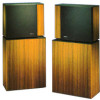Bose 8.2 Stereo Everywhere Owner's guide - Page 5
Output, STEREO, TITHER, RECEIVER, Right, Speaker
 |
View all Bose 8.2 Stereo Everywhere manuals
Add to My Manuals
Save this manual to your list of manuals |
Page 5 highlights
• E. Next, make sure your receiver or amplifier is switched "off" and unplugged. Connect the other end of the wire to the terminals marked "left" on the rear of the receiver/amp, mak- ing sure to connect the positive side of the wire to the receiver/amp positive terminal (marked ( + ) or colored red) and the negative side of the wire to the negative terminal (marked ( - ) or colored black). Refer to Figure 3. The idea is to make sure that the speaker's positive terminal is connected to the receiver/amp's positive terminal, and the negatives are connected properly as well. Make sure all connections are secure. Lett Output STEREO Ma:TITHER OR RECEIVER Right Output -+ F. Repeat Steps D and E for the Part 2 (right) speaker and right receiver/amp side. Make sure all connections are secure. Lett Speaker Right Speaker G.Finally, check carefully to make sure that no loose strands of wire are brushing against the other terminal on H. If you are not sure the speakers are 3. Play some music with deep bass. either the speaker or receiver/amp. hooked up correctly or in phase" If the speakers are hooked up cor- Such "bridged" wires create short (positive to positive, negative to nega- rectly, the sound will come from a circuits which can damage your tive), try this simple test: point between the speakers and will amplifier. Repair any loose wire strands before plugging in your receiver/amp. 1. Set your receiver/amp to MONO (monophonic or "L +R").Be sure that the balance control is in the have full, natural bass response. 4. If you do not hear much deep bass, shut the receiver/amp off. Then normal or centered position. reverse the + and - connections 2. Move the speakers until they are facing each other closely. on one speaker only and repeat the test. Use whichever connection produces the most bass. 5











